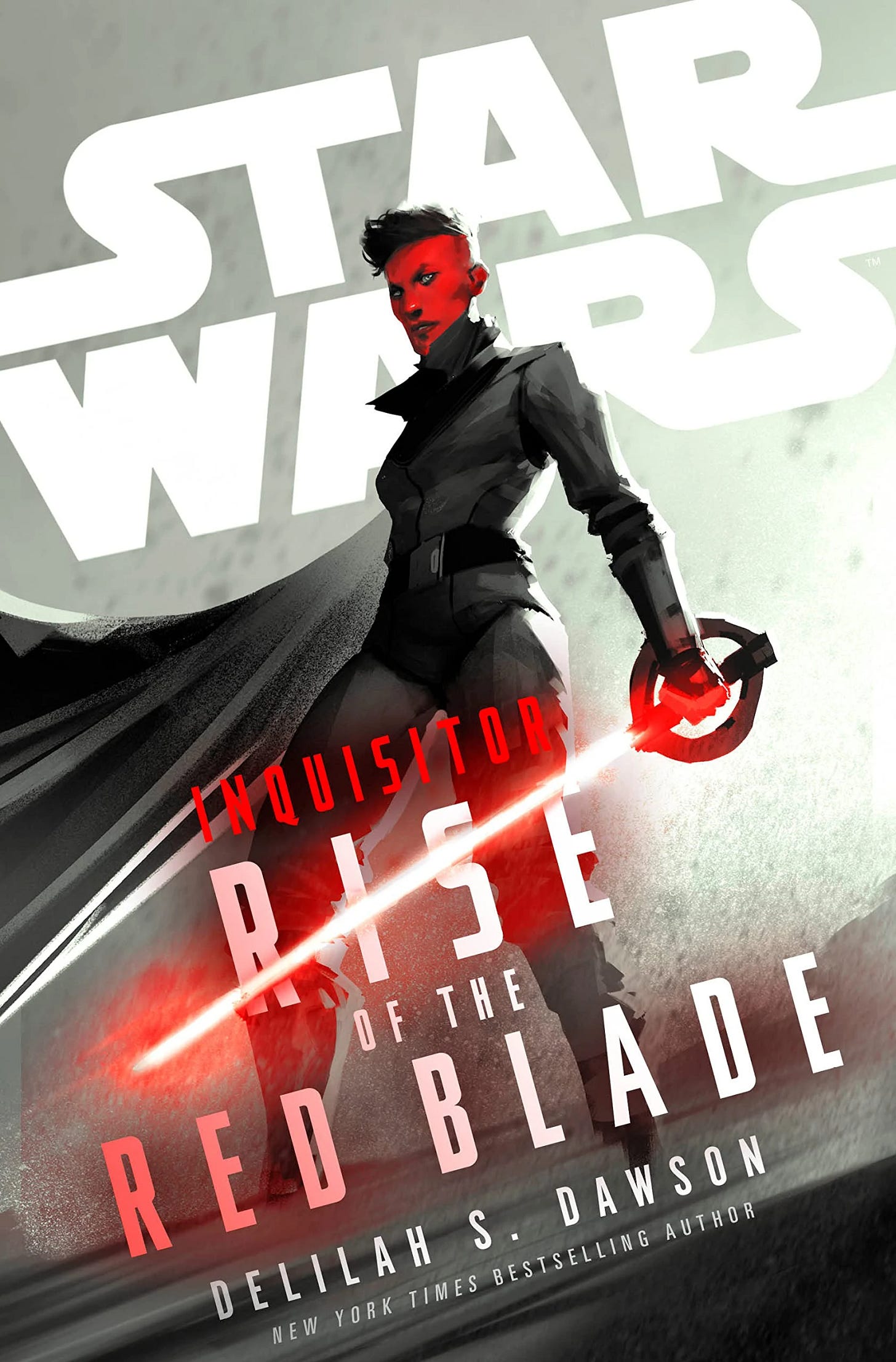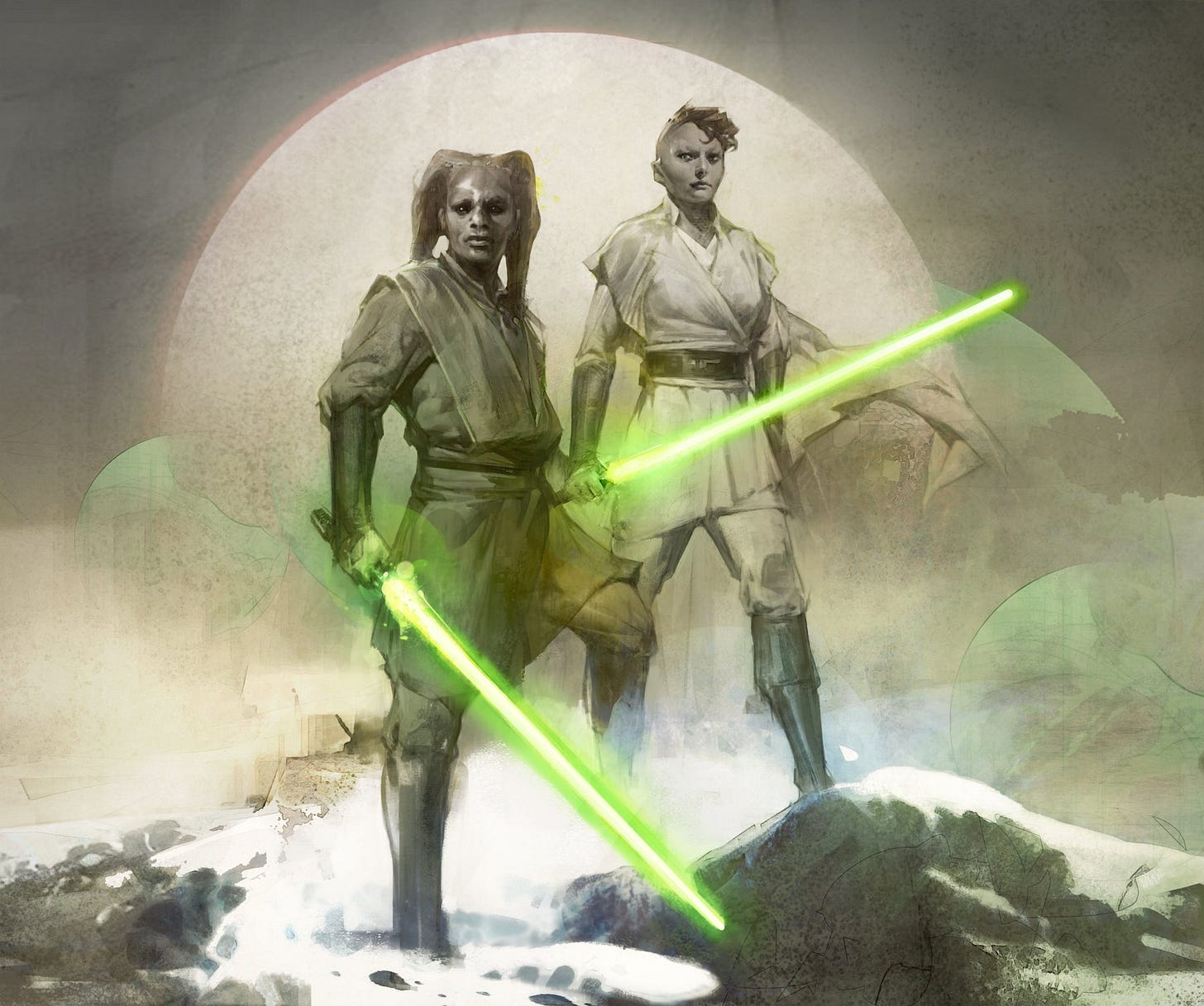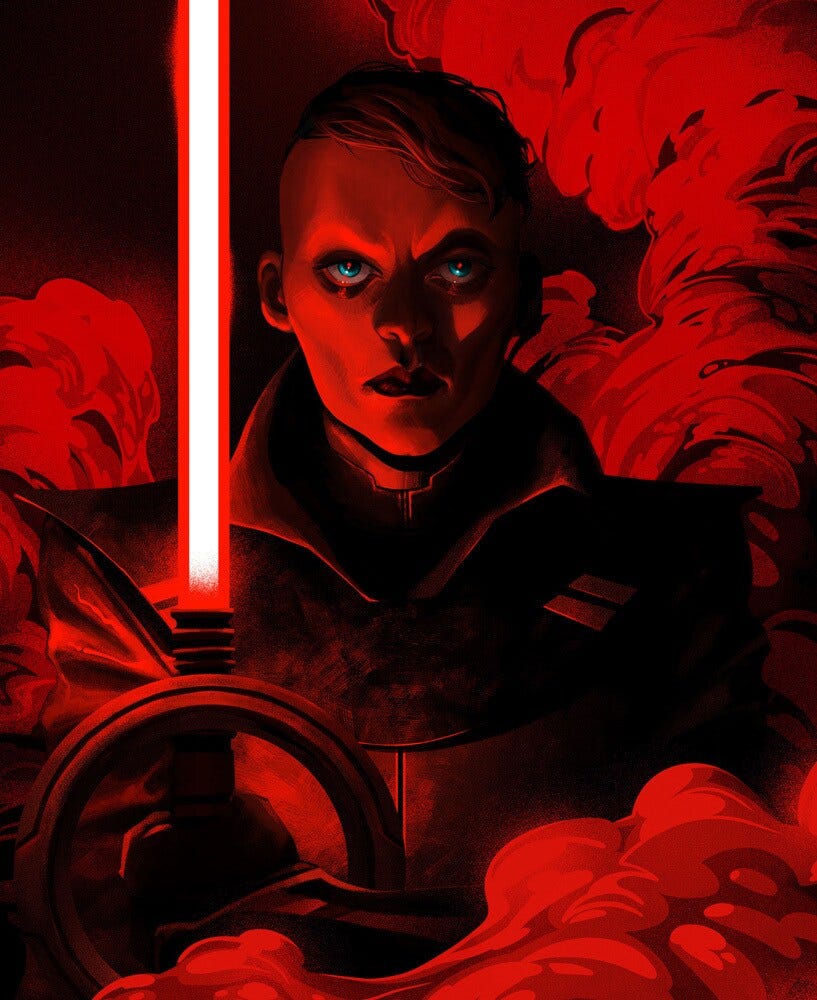Book Review: Inquisitor - Rise of the Red Blade by Delilah S. Dawson
Sometimes we are pushed to be the villain.
To write about a villain’s origin and to maintain empathy throughout is a difficult task. To accurately portray motives of “evil” characters without writing them off as just “evil” requires a writer to find that perfect middle ground. Delilah S. Dawson expertly pulls this off with her latest addition to the Star Wars universe with Inquisitor: Rise of the Red Blade.
Star Wars is no stranger to pushing the empathetic-villain narrative. In fact, I recently covered Dark Disciple which gives Ventress her due and even though it’s not a complete picture of Darth Malgus, Star Wars: Deceived gives emotional insight to one of the more terrifying characters in SW history. Finally, Drew Karpyshyn’s Darth Bane trilogy is also a perfect example of giving a reader a weird fist-pumping attitude toward a murderous maniac.
Dawson previously wrote Phasma which achieves this goal as well. Her novel gives insight into one of the better (and underwritten) characters in the new trilogy. Not only do we see more of how Phasma approaches military situations - we also found out how she got that shiny, chrome armor (a post for another time, maybe?)
Rise of the Red Blade fills in the story between the fall of the Jedi council and the rise of the Inquisitors and how they recruited the former Jedi. I was shocked by how much of the book takes place before Order 66 is enacted but found it necessary in explaining the main characters motives later on.
Starting right before the Battle of Geonosis during the Clone Wars, Star Wars: Inquisitor Rise of the Red Blade follows Iskat Akaris, a padawan when we first meet her. She is red-skinned and has longer hands than most people/aliens. We are not aware of her origins and she does not know either and spends a good part of the book looking for that identity. The novel starts with Akaris under the reluctant mentorship of Sember Vey, a human Jedi. Vey is primarily concerned with gathering artifacts and text for the Library at the Jedi Temple. Akaris is interested in learning combat skills which Vey only allows her to train with droids rather than teach sparring herself.
Early on, the Battle of Geonosis begins and the Jedi Council makes the difficult decision to send jedi and padawans into combat. Many of these padawans (and some Jedi) have not even experienced real combat yet and in being sent to Geonosis, they are sent to their deaths. Played out from the terrified eyes of Akaris, we witness the brutality and pointless deaths of many young padawans who never had a chance. This entire moment paves the way for distrust Akaris will develop for the Jedi Council. During the battle, Akaris kills many Geonosians in a rage and learns to love that feeling - this is also the start of her journey towards the dark side. Her Master Sember Vey is killed during this battle as well.
After the “success” of Geonosis, all padawans are knighted to Jedi without having to pass trials or complete any more training. Akaris is then made a Jedi and asked to go on a mission where she improvises against the wishes of the Jedi Council. After being reprimanded, Akaris lets resentment build up until she is approached with an opportunity to live during Order 66.
I don’t want to give too much of a summation because really, the turn for Akaris happens late in the book and giving away too much of the plot will take away from the experience.
I knew that Dawson would do a great job with the material so I was excited about this release for a couple of months. Her execution with Phasma gave me hope and the concept of the book engaged me. It’s very well done and Akrais is a character who I hope gets some recognition in the cinematic universe at some point.
Akaris is frustrated with her emotions and her lack of support she commonly feels from those around her. I identified strongly with this part of the narrative as someone who is emotional themselves. She’s constantly looking for a safe space for her feelings and validation from those above her only to be met with “be patient” and told not to think about the thing that you’re constantly thinking about. Akaris time and time again goes to the Jedis with big questions about her actions or her birthright and is met with “just focus on now.” Being present is a good habit but some questions or feelings do require attention. Akaris never received that.
Over the course of the book, her mishandled emotions lead to her disowning everything she learned because even if the Sith adopted her to seek out other Jedi to murder, at least they gave in to how she felt which was more important than what she should do.
Dawson crafts this journey and narrative expertly. I was expecting more time with Akaris as an Inquisitor but we really see her working towards that eventual break from the ideals of the Jedi.
Rise of the Red Blade is a good book for a casual Star Wars fan that gives plenty of context to one of the biggest moments in Star Wars canon. For those well-versed, Dawson fills in gaps that help connect the bridge between Jedi and Inquisitor.
Much like Dark Disciple, I was left with plenty of emotions at the end and felt that the conclusion was thoughtful. I’m curious to see how more of the Inquisitor-lore ties into Ahsoka later this month as characters have been teased in the trailers.






